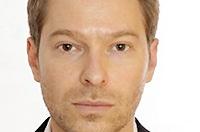While Volkswagen Group’s Richard Dorenkamp and Jens Hadler may have been the powertrain duo who first introduced the defeat device into the automaker’s 2.0 liter diesels nearly a decade ago, former VW brand development chief Heinz-Jakob Neusser appears to have perfected it, according to U.S. court documents.
Roughly five years ago, VW detected that some of the cars equipped with the cheat system were experiencing undue stress to their exhaust systems. Engineers at the brand believed the hardware failures were a result of the cars incorrectly operating in test-bench or "dyno mode" -- in other words within the U.S. clean air limits -- when in reality they should have been in so-called "street mode,” during which they would be significantly exceeding emissions rules, according to court records.
The engineers illustrated the problem caused by the defeat device with the help of some documents in or around July 2012, according to the indictment. Instead of sounding the alarm, Neusser, who was then head of VW Group powertrain development, concealed this evidence and even ordered that it be destroyed, according to the indictment.
Neusser's attorney could not be reached for comment.
Neusser’s team fixed the problem by launching an after-treatment system that primarily cleaned up harmful nitrogen oxides emissions when sensors detect the car driving forward in a straight line, as it does when placed on the rolling bench of a dynamometer.
Documents released by U.S. authorities show that it was Neusser who, in or around April 2013, authorized the use of this new "steering wheel angle recognition" feature to supplement the test-detection software. "By making these alterations to the operation of the defeat device, the conspirators ensured that [the car] would almost never would be driven on the road in an emissions-compliant manner," the indictment said.
Three months later Neusser was promoted to head of development at the VW brand, replacing Ulrich Hackenberg, who moved to Audi as head of technical development. Although Hackenberg, who was VW brand’s head of technical development from February 2007 until July 2013, has not been implicated in the emissions-cheating scandal, his resignation in December 2015 seemed like a move made to shield the company from further harm.
Of the six men indicted in the U.S. this week for conspiracy, Neusser was the only one in the public eye. It was his job as head of VW development to present new concepts and models at auto shows such as Frankfurt and Geneva, sometimes in front of thousands of journalists and invited guests. He was the second most familiar face after his boss, former VW CEO Martin Winterkorn.
Neusser was a very approachable executive who enjoyed taking the time to walk journalists through his team's newest developments. Because of this, it is eye-opening to read court documents that paint him as a cold, calculating type capable of committing a crime and destroying evidence to cover his tracks.
While VW executive Oliver Schmidt is being held in the U.S. without bail pending trial, Neusser remains a free man. Given the mounting evidence against him -- accumulated with the help of an independent Jones Day probe authorized by Volkswagen -- it wouldn't be surprising if Neusser were arrested at some point and faced trial in Germany.





